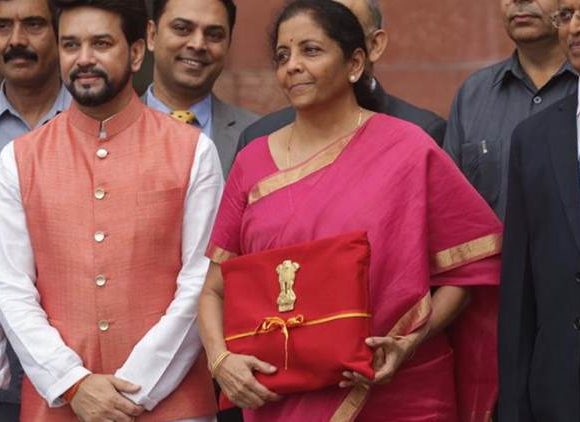

GDP growth falls to over six-year low of 5% in June quarter.Indian economy or GDP expanded at lower-than-expected 5% year on year in the April-June quarter, the slowest in over six years, driven by weak investment growth and sluggish demand. In the March quarter, Indian economy at expanded 5.8%. Economists in a Reuters poll had expected GDP to grow at 5.7% in the June quarter.
The manufacturing sector grew at just 0.6% while ‘Agriculture, Forestry and Fishing’ sector at 2%. The ‘Mining and Quarrying’, ‘Construction’ and ‘Financial, Real Estate and Professional Services’ grew at 2.7%, 5.7% and 5.9%, respectively, during this period.The RBI had lowered its outlook for the fiscal year 2019-2020 at its August meeting. It has repo rate by a combined 110 basis points since February. With inflation staying benign, analysts expect the central bank to ease rates further.
Slowdown in growth due to endogenous and exogenous factors, said Chief Economic Adviser K.V. Subramanian after GDP data release.
“Given the indications we have seen in the past few months, growth was expected to be slow. However, 5% is far below street estimates of 5.6%-5.7% and does come as a surprise. This was primarily driven by lower growth in private consumption. Manufacturing growth staying almost flat is also worrying and immediate steps are needed to revitalise this sector. An overall recovery may take another couple of quarters as the NBFC sector is still recovering from the liquidity crisis,” Gourav Kumar, principal research analyst at fundsindia.com, Chennai, told Reuters.
A host of high frequency indicators like auto sales continue to weaken. Domestic passenger vehicle sales in July dived at the steepest pace in nearly two decades and declined for the ninth straight month in July. In addition, the risk of further escalation of the US and China trade war are weighing on demand and business confidence in India.
“National accounts data is consistent with the picture suggested by leading indicators for Q1, FY20. GDP growth has decelerated to 5% – the lowest since Q4, FY13. “There is an acute slowdown in the manufacturing and agri sectors on the back of a slowdown in aggregate demand – both consumption and investment demand. Except for mining activity and power generation, all other productive sectors have slowed on a y-o-y basis. In our opinion, the weight of structural factors has gone up in the slowdown and mere monetary stimulus may not work beyond a limit,” Rupa Rege Nitsure, group chief economist, L&T Financial Holdings, Mumbai, told Reuters.
Last week, Finance Minister Nirmala Sitharaman announced a number of steps to revive economic growth and shore up market confidence, including rolling back recent tax hikes on foreign and domestic equity investors and several measures for industries.
The government earlier this week further liberalised foreign direct investment (FDI) rules in many sectors, in an effort to get economic growth back on track.
The government allowed 100% foreign investment for coal mining, associated infrastructure and sales of fuel.
Separately, India’s fiscal deficit in the four months through July stood at ₹5.48 trillion or 77.8% of the budgeted target, for the current fiscal year, separate government data showed today.
Net tax receipts in the first four months of the fiscal year were ₹3.39 lakh crore, while total expenditure was ₹9.47 lakh crore, government data showed.
The government has set a fiscal deficit target of 3.4% for 2019/20, same as 2018/19.


















